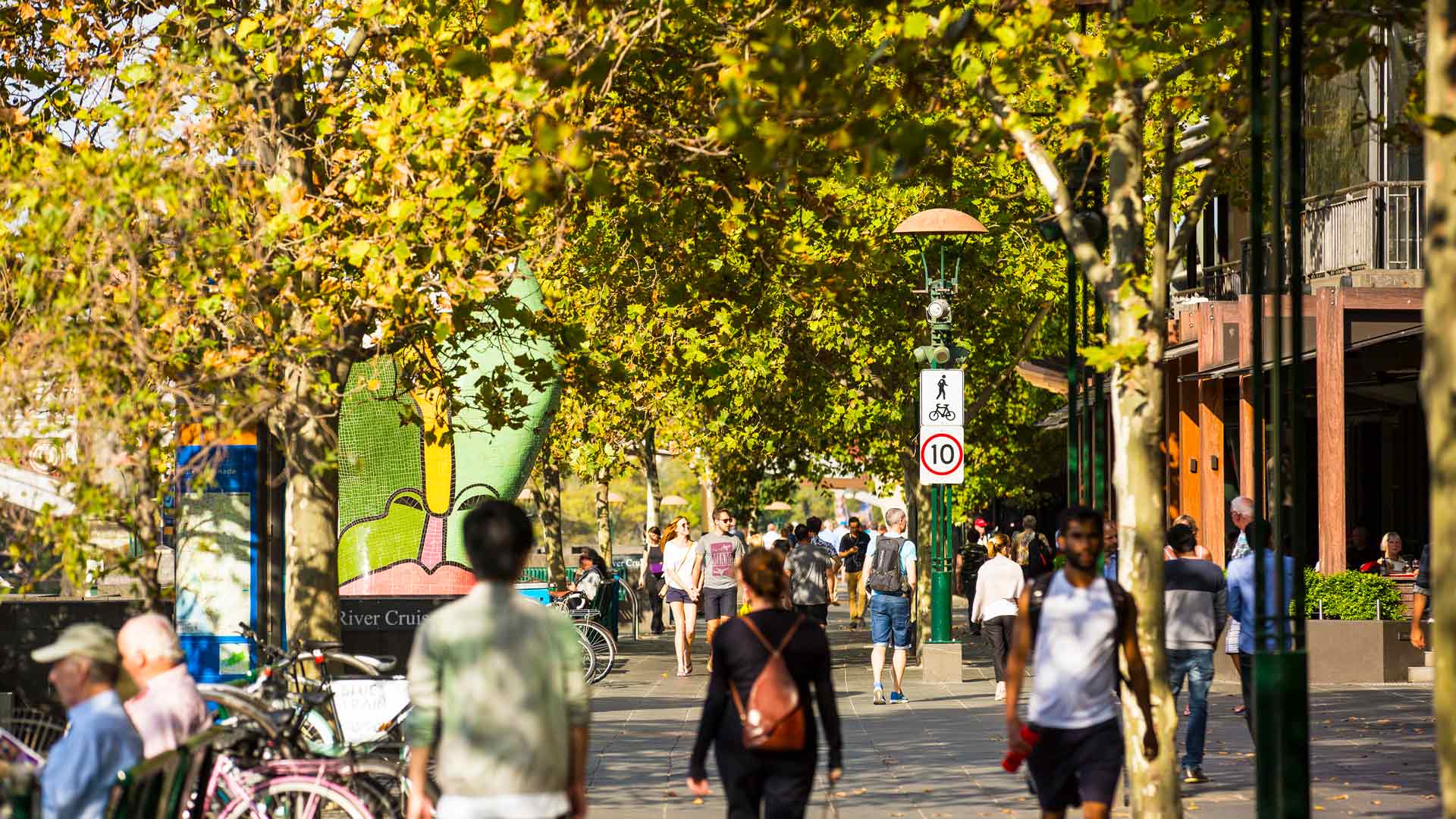Melbourne's Throat-Scratching London Plane Trees Are Being Uprooted and Replaced
A heap of the irritating trees are being swapped out for climate change-resilient jacarandas, Moreton Bay figs and sweet gums.
Come springtime in Melbourne, few things are more certain than hideous bouts of hay fever and hay fever-like symptoms, largely brought on by the wildly shedding London plane trees dotted all over town. Don't usually get hay fever? Pfft — these trees don't even care, they'll get you anyway.
So there's set to be a whole lot fewer weeping eyeballs and scratchy throats, with news the bane of your spring existence is getting uprooted. Well, mostly. City of Melbourne has announced that it'll progressively replace a bunch of the troublesome trees with less irritating species planted throughout the city.
Most of the plane trees were planted in the 80s and 90s, deemed beneficial for their big, shady foliage and ability to grow speedily even in harsh conditions. Less fun is the fact that they shed leaf shoots and 'trichomes' (hairs) at a crazy rate, right when pollen levels are peaking. While the most common cause of hay fever is grass pollen, the plane trees can cause serious nose, throat, eye and skin irritation — which is similar to hay fever symptoms.
It's unsurprising the planes are giving you nightmares, since they make up a whopping 70 percent of the CBD's tree population. And as far as the overall tree population on public City of Melbourne land goes, these guys are currently sitting at nine percent — the aim is to have no tree species clocking in at more than five percent.
Many red-eyed, itchy-nosed Melburnians have taken to social media to celebrate the news of the plant trees demise.
https://twitter.com/MomentsAU/status/1187213385093402624
The Council plans to reduce the plane trees' dominance by investing $4.2 million into planting 3400 new trees over the next year, favouring a mix of local and foreign species that are well suited to Aussie weather and resilient to the impacts of climate change. Its research has flagged the likes of Moreton Bay figs, jacarandas and sweet gums as ideal replacements.
Some plane trees have already been axed from Lygon Street (between Victoria Street and Queensberry Street), Lonsdale Street (between Elizabeth Street and Swanston Street), and stretches of both Russell Street and Exhibition Street. Plane trees are also being removed from along Southbank Boulevard, to be replaced with over 300 lemon scented gums, red iron barks and liquidamber trees.
To find out more about the City of Melbourne's plane tree replacement plan and its overall Urban Forest Strategy, head to the City of Melbourne website.
Top image: Josie Withers for Visit Victoria.





